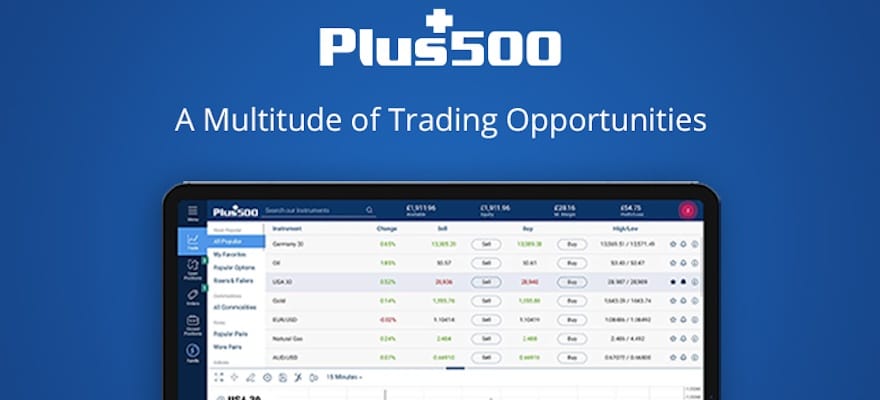Global Multi-Asset fintech group Plus500 is committed to enhancing the trading experience for its clients. With this objective, the company empowers traders with free real-time trading alerts, the latest financial news releases and events in the geopolitical spectrum, as well as market analysis.
Acting as a hub for its community of traders, Plus500 shares multi-asset trading news, research, and market insights by top commentators on its website and social media pages.
The website also includes an extensive knowledge resource to enable traders to continue to hone their skills.
Investing in technology: a win-win scenario
Increased automation and user-friendly technologies were developed amid an uncertain environment last year. This has driven the popularity and accessibility of Online Trading channels, so much so that the company recorded customer deposits worth $1.1 billion in H1 2021.
This milestone was driven by Plus500’s focus on “enabling simplified, universal access to the financial markets.” The company continues to invest in scaling its technology across devices, countries and financial instruments.
Another key milestone was the expansion of the company’s product offering with the launch of Plus500 Invest, a share dealing platform launched in select markets in Europe in July 2021. Further roll-out of the platform across Europe is planned for H2 2021.
Plus500 enables traders to get real-time price alerts on their devices regarding price changes to help them stay at the top of their game. This means traders can keep track of potential opportunities in the global financial markets without disrupting their routines.
Emphasis on Trader Education and Knowledge
Plus500 has always offered cutting-edge trade analysis, market reports, and real-time news releases on its website and social media pages.
With a commitment to providing a best-in-class service, the fintech group conducts regular customer surveys to better understand client needs and fine-tune its offering accordingly.
Plus500 has continued to upgrade its educational resources, including its “Traders Guide”, to ensure that clients can continue to build a sophisticated understanding of the various trading tools available on its platform, as well as the overall market dynamics and the risks involved in trading.
A market insights real-time newsfeed was also initiated to support clients with knowledge about the latest market developments.
Access to Global News is More Important than Ever Before
The global markets are facing an unprecedented environment. Many governments continue to follow the path of low interest rate regimes, while adding stimulus measures, which in turn drives an expectation of future inflation.
At the same time, the stock indices are continuing to perform well, reaching record highs, and showing no signs of abating.
With so many economical and geopolitical developments occurring worldwide, cutting through the sheer volume of noise and determining what’s important can be difficult for traders.
The presence of social media often amplifies already extreme moves in the market, with tweets by well-known online personalities only adding to the noise.
Plus500 empowers traders to make sense of global developments by highlighting the most valuable and reliable daily market insights and financial news, helping clients to stay abreast with the latest and most important market moving events.
This in turn helps with informed trading decisions.
The availability of social sentiment indicators means traders are also able to see an aggregate analysis of the trading activity on its Plus500 platforms, allowing clients to modify strategies based on the current trends accordingly.
Continuing on the Growth Roadmap
Plus500’s well established, experienced and skilled team, combined with the agile nature of its platform’s underlying technology, meant the company was able to continue to provide a smooth service to its customers despite the sudden increase in trading volumes in 2020.
Plus500 recently provided an update to its performance for H1 2021, for the period ending June 30. The company achieved significant positive operational and financial momentum during the 6 months ending June 30, building on its pre-pandemic performance.
The company announced group revenue of $346.2 million and EBITDA of $187.6 million for the first half of 2021. Plus500 also added 136,980 new customers in the 6-month period, increasing its active customer base to 333,940.
The vision of the company is to enable easy and universal access to the global financial markets through its powerful proprietary technology platform.
This will be enabled by its strong functional infrastructure and resources, a robust financial foundation and track record and a customer-centric approach.
As part of its expansion roadmap, the company recently entered the Futures and Options on Futures market in the USA and continues to seek out significant growth opportunities in existing markets and beyond.
















